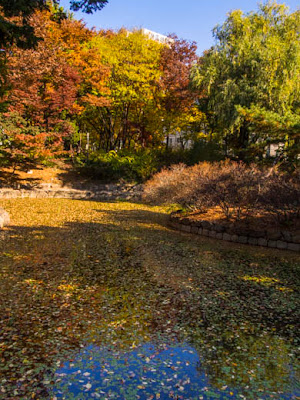For the first time in a number of years, I headed back to Wisconsin for Christmas. It's an especially significant Christmas, as on Dec. 22, my niece Hannah was baptized. One of the difficult things about teaching and living so far from home is that I miss many of the significant family events/milestones. This Christmas, the family will finally be together, celebrating Christ's birth at my parents' house in Wisconsin. A direct flight from Seoul to Chicago brought me closer to the frozen tundra of Wisconsin, and my parents flew in from their winter trailer home in Arizona.
Between the 6-8" of snow that fell on Saturday night/Sunday morning (on top of what already was on the ground) and the frigid temperatures that followed it, winter definitely is upon us. But more importantly, is the opportunity to once again focus on the true meaning of Christmas - Jesus Christ humbling Himself by coming to Earth as both true God and true Man to redeem all of humanity from their sins. The ceramic nativity scene above, from Oaxaca, puts a Mexican spin on the major events of the events of the Messiah's arrival - the birth of Jesus in the stable, angels' announcement to the shepherds, and the later arrival of the Magi.
Also set up in the dining room at my new condo in Madison is the Christmas tree and winter dolls.
A Blessed CHRISTmas to all.


















































